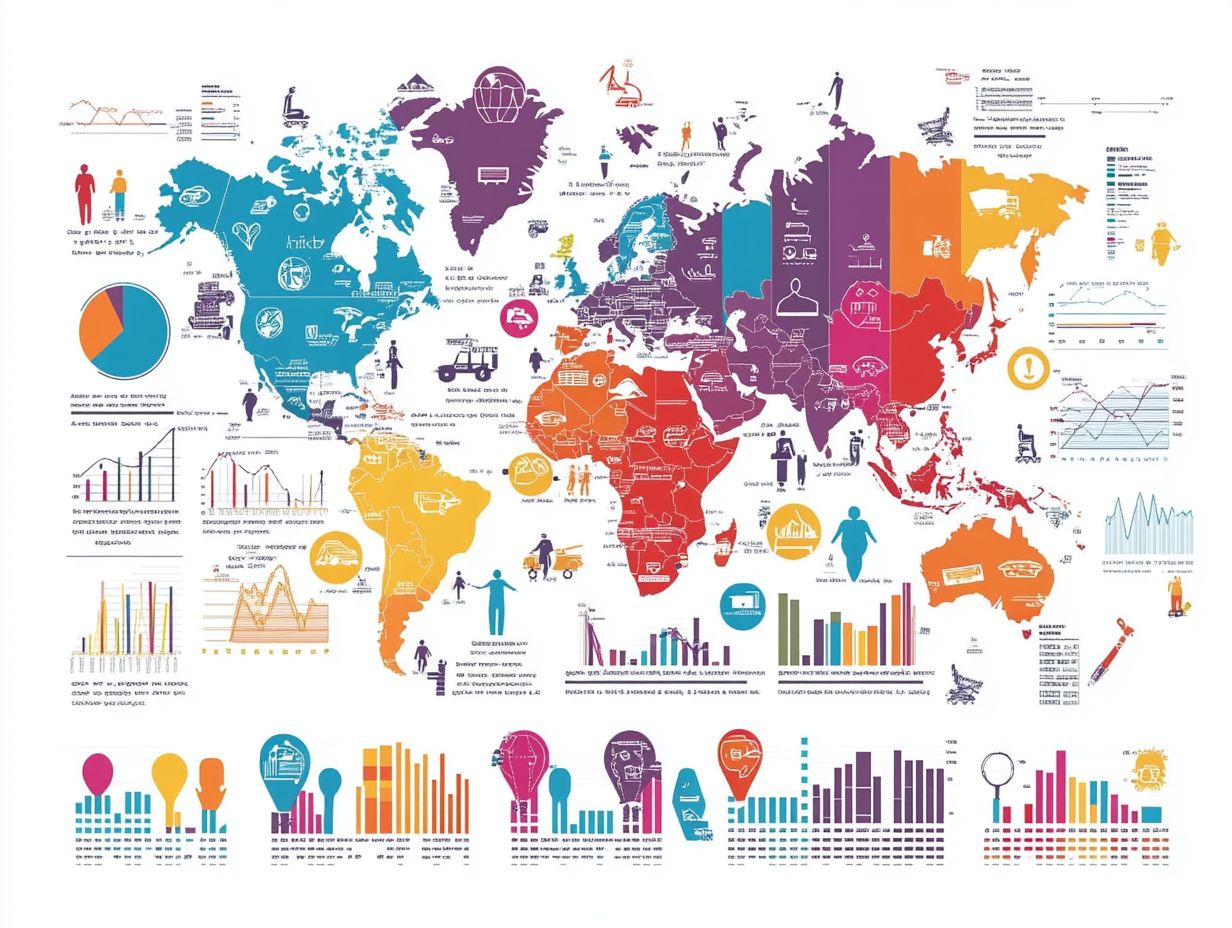Understanding customer demographics and consumer insights is essential for businesses that want to tailor their products and services effectively. This article delves into the definition and importance of demographics, psychographics, and how location data can help identify key customer segments. It discusses various data sources, including mobile data and CRM systems, and analysis techniques, supported by real-life case studies that demonstrate successful applications. Additionally, best practices will be shared alongside common pitfalls to ensure the effective use of location insights and geographic data for maximum impact. Join us as we explore the fundamentals of leveraging demographics, market segmentation, and consumer behavior analytics to enhance your business strategy.
Understanding Customer Demographics

Customer demographics encompass factors such as age distribution, income levels, gender breakdown, and socio-economic status, which are utilized to develop customer personas and market segments.
This demographic information is crucial for businesses aiming to improve their marketing strategies, as it enables them to identify and segment their target audience effectively using audience segmentation and buyer persona development.
By analyzing customer demographic data, companies can create more accurate customer personas and gain deeper insights into consumer behavior, purchasing patterns, and customer preferences.
These demographic factors, including socio-economic factors and lifestyle segmentation, allow marketers to segment their audiences and markets more effectively, leading to more informed decisions that align with regional and market trends.
Definition and Importance
Demographic analysis is the statistical study of populations and their characteristics, including demographic profiling and audience analysis, and it plays a crucial role in identifying a brand’s target audience.
This analysis includes factors such as age groups, gender analysis, and income levels, which companies use to assess potential customer preferences and behaviors.
For instance, a younger audience may be more receptive to digital marketing strategies and online behavior analysis, while older customers might respond better to traditional marketing approaches.
Additionally, understanding income levels enables brands to set product expectations and pricing strategies that cater to different socioeconomic groups.
This not only enhances behavioral targeting but also improves customer satisfaction, as businesses can provide tailored solutions that align with the unique preferences of their audience.
Using Location Insights to Identify Top Customer Demographics

Identifying key customer demographics through location insights allows businesses to tailor their marketing strategies according to the geographic segmentation and spatial analysis of their target market.
This process involves analyzing various location data points, including population density, urban versus rural demographics, and regional trends, to determine the locations of prospective consumers.
Data Sources and Analysis Techniques
Businesses leverage various data analytics sources and analysis methods, including data mining and statistical analysis, to gain insights from location data, enhancing their understanding of customer demographics and consumer segmentation.
They utilize surveys to collect behavioral and preference data from consumers, analyze transactional data to measure purchase behaviors, and employ heat maps to visualize foot traffic analysis and engagement metrics across different locations.
Data visualization techniques are then applied to present complex datasets in an accessible manner. Tools such as charts, graphs, and geographical maps enable stakeholders to efficiently analyze large volumes of information and make informed decisions, contributing to effective data-driven marketing strategies.
Additionally, location intelligence can be integrated with marketing data to enhance marketing efforts by delivering messages at the right time, place, and to the appropriate audience.
By customizing marketing campaigns based on geographic data, customer insights, and consumer preferences, businesses can ensure a better customer experience and drive higher sales performance.
Case Studies and Examples

Case studies and real-life examples illustrate how businesses have effectively utilized customer demographics, demographic analytics, and location insights to enhance their marketing strategies and improve customer interactions.
Real-life Applications and Results
Real-life applications of customer demographics demonstrate how organizations have leveraged audience insights and customer profiling to enhance their market positioning and achieve measurable results.
For instance, a leading sports apparel brand analyzed demographic data and found that women aged 25 to 40 were increasingly participating in fitness activities. In response, the brand adjusted its marketing campaigns to target this audience by featuring relatable female athletes and introducing products tailored to their specific needs.
As a result, the brand experienced a 30% increase in sales within that demographic the following year.
Similarly, a popular beverage company utilized local demographic insights to refine its product flavors and marketing strategies, effectively reaching younger consumers in urban markets. This strategic adjustment led to a 15% increase in brand loyalty and customer satisfaction.
Tips for Utilizing Location Insights for Customer Demographics

Effective customer segmentation and a thorough understanding of buying patterns in specific areas are essential for leveraging location insights related to customer demographics.
Best Practices and Common Pitfalls
Best practices and common mistakes can guide businesses in utilizing location insights to better understand consumer demographics.
Data-driven strategies allow businesses to tailor their marketing and advertising initiatives to specific geographic regions, enhancing relevance and engagement.
For successful implementation, demographic analysis, including demographic studies and geographic insights, should be conducted alongside location-based marketing strategies rather than in isolation. Organizations must also be aware of common pitfalls, such as neglecting to incorporate feedback from customers, which can provide valuable insights for improving approaches through customer journey mapping and customer feedback analysis.
Failing to conduct a thorough analysis of key demographic factors may result in missed opportunities for the brand to connect with and resonate with specific target audiences.
An adaptable framework that embraces consumer feedback, customer relationship management (CRM) systems, and is driven by data can significantly enhance the effectiveness of marketing initiatives through data-driven marketing.






